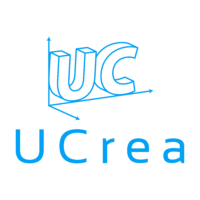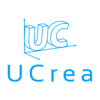
Inserting threads in 3D printed parts is simple. Having the ability to fasten other elements or parts to 3d printed objects adds a lot of value to your prints. Several options are available. Threads can be designed directly into the parts and formed during the additive manufacturing process. This method requires the least amount of post processing but comes with its set of design challenges which we will discuss in further detail. Another option is to create a hole of the right diameter and use a tapping tool to machine threads into the plastic of your 3D printed object. Although this method requires more time, it results in cleaner threads and still does not require any other external hardware. If you are ok with adding external hardware and want a threaded option that requires minimal post processing and a durable thread, inserting a nut recessed in a pocket is a great alternative. This method results in threads that can sustain many disassembly and reassembly cycles. Lastly, for the sturdies and most durable thread, you can install a heat set insert. We will further discuss all these options in the next paragraphs.
Designing threads directly into the part

It is best to fully design your own thread geometry instead of using cosmetic thread tools or other thread tools that may be provided by your software. These tools may create approximation of threads and might not provide you with the proper geometry to ensure your fastener screws smoothly into the printed thread. Usually, a simple helix curve coupled with a swept cut or extrusion of the right geometry will do the job. Make sure you research the right thread geometry for your intended fastener type and size. Sizes under M3 might not come out as cleanly as M3 or larger screw sizes or their imperial equivalents (4-48 or more). Typical thread angles result in a 60 degrees overhang. Because internal threads do not protrude significantly from the main body of the part, these threads will still print out cleanly although they break the “45 degrees” rule.
Advantages
- No post processing or other tools required.
- No need for additional hardware
Disadvantages
- The geometry of the thread must be designed in CAD
- Printed threads might be too loose or too tight
- Limitation in orientation of the threaded hole


This method only works well on threads whose axis is aligned with the vertical (Z axis) of the printed object. Although printing threads in other orientations is possible, the threads will not come out as cleanly due to sagging of the plastic being printed beyond 60 degrees overhang.
If there is a small excess of plastic or the real-life geometry of the printed thread differs slightly from the geometry of the CAD or STL files, you can always address the issues by using a tapping tool to clean out the holes before inserting your screw.
Tapping threads in a printed hole
You can tap threads directly into a printed cylindrical hole. Research the proper hole or drill size necessary for the tapping operation of the recommended screw size you will use. You then simply need to insert a hole in your 3d model of the proper dimensions at the location of the future thread.




Advantages
- No need to design the thread geometry into CAD
- Perfect thread geometry
- No need for additional hardware
Disadvantages
- Requires additional tools and post processing time



Although not necessary, you may choose to design the hole slightly undersized and drill it to the right dimensions before tapping it if you want to guarantee the tapping procedure goes well and results in a perfect thread geometry.
Using nuts
An alternative method of fastening is to use a threaded nut inside a pocket. Nuts can be found in hexagonal, square, or rectangular geometry. Because more surface area is in contact with the plastic, a rectangular geometry has the most resistance to pull-out and torque-out. This is even more true for nuts that have sharp corners instead of rounded ones. Square nuts also offer better resistance to tear compared to hexagonal nuts although not as much as rectangular ones. The 14 images below illustrate different scenarios.














An additional advantage of square and rectangular nuts is that they allow you to position them in more orientations than hexagonal nuts, as you can see from the above models. Due to sagging, printing hexagonal slots such that the overhang angle is 60 degrees will likely result in a slot that is too tight to properly fit a nut.
If, while designing, geometric limitation forces a hole to be places above the slot where a nut is inserted, a tip is to add a thin membrane in the horizontal plane of 1 or 2 layers thick that will be bridged above the slot. This allows the smaller diameter hole to be printed easily above the bridge membrane. That membrane can then be removed by either drilling or punching it with the screw.

Example of a bridged thin membrane
Advantages
- No need to design the threads directly into the CAD
- Durable and reusable thread
- No additional tools required
- Little additional post processing
Disadvantages
- Additional hardware required
Although this would require an additional tool, if the printed hole results in a geometry that is too small or has excess material from a sagging overhang, you may use a soldering iron to press down and melt the plastic around the nut as you insert it in place.
Alternatively, if you want a stronger thread or if the hole is slightly too large, adding an epoxy or a glue that binds both metal and the plastic used for your part is an option. Make sure the adhesive used also resists the humidity, temperature, and chemicals you will be exposing your parts to!
Heat-set inserts

Heat-set inserts are usually made of brass with a ribbed or knurled outside geometry and a threaded internal geometry. They come in all sizes, lengths, and geometries. The exact one to use depends on your needs in torque-out force, pull-out strength and required screw length. Heat-set inserts simply require a hole of the right size to be inserted in the 3D printed model. The exact hole dimensions in specified in the datasheet of the threaded insert used. Some holes may require a taper. Simply heat up a soldering iron to 300-350C, place the insert on the tip and slowly insert it into the hole. You may use a flat object to straighten out and level the insert before the molten plastic re-solidifies. The plastic melts and reflows around the insert’s external geometry. This results in the strongest thread option both in pull-out and in torque-out for a given screw size.
As a demonstration piece, we designed and printed a custom, tight-seal enclosure that might have held a piece of sensitive electronics in a humid environment. The custom 3D printed elastomer gasket gets squeezed under to force of the screws.



Advantages
- Strongest threaded connection
- Durable and reusable threads
- No need to CAD the threaded geometry
Disadvantages
- Additional hardware required
- Additional tools and post processing required
Although a standard soldering iron tip will work, it is recommended to get a tip made specifically to insert the proper sized insert you are trying to install on your printed part.

If you have a lot of inserts to install, you may also want to invest in building a custom heat set insert press to hold your soldering iron perpendicular to your work plane for a series of quick and clean insertions.


Additional design considerations
With all these design methods, at least 3 walls (shells) thickness is recommended along with at least 25% infill. For example, you should select the standard setting when ordering through our automated quote engine. The thicker the wall, the stronger. That is because a thicker wall around the thread will sustain more torque and pull-out force from the screw. This is especially true if you choose to tap the thread from a hole directly into the plastic. The tapping process will remove some of the material of the wall, leaving thinner walls behind. You can specify the tapped holes and desired wall thickness in the notes when ordering through our online ordering platform.


One of the biggest advantages of 3D printing is the ability to print out multiple versions of a model with slight modifications at a much lower cost than other manufacturing technologies. As such printing out the subsection of your parts that contains threaded geometry to determine the exact fastening method and geometry before printing out the final version of your model might be worth the investment. More importantly, the anisotropic nature of 3d printing might make calculating the failure point and predicting the failure mode challenging. These properties might only be revealed through testing your material, thread, and fastener choice with a few samples.


